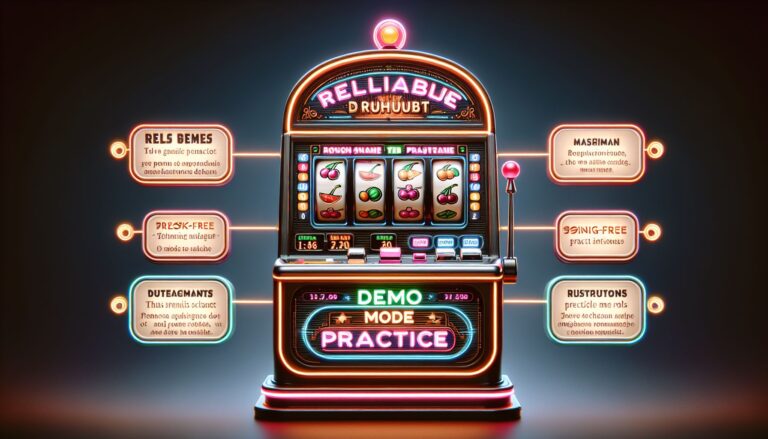#The Evolution of Casino Entertainment: A Journey Through Time
Casinos have been a source of entertainment for centuries, catering to the thrill-seekers and risk-takers of society. From the lavish gambling halls of ancient Rome to the glitzy and glamorous casinos of Las Vegas today, the evolution of casino entertainment has been a remarkable journey through time. In this blog post, we will take a closer look at the ups and downs, the changes, and the innovations that shaped the casino industry into what it is today.
The Beginning: Gambling in Ancient Times
The origins of casino entertainment can be traced back to ancient civilizations, such as the Romans and Greeks. Gambling was a popular pastime among upper-class citizens, who gathered in luxurious villas to play games of chance, like dice and card games. These gatherings were not only about gambling but also socializing and showcasing wealth.
During the Middle Ages, gambling was banned in Europe due to its association with immoral activities. However, in other parts of the world, such as China and the Middle East, games of chance, like dice and dominoes, continued to thrive. The Chinese also took it a step further by inventing a game similar to Keno, which is still played in casinos today.
The Birth of Casinos
The word “casino” has its origins in Italy, where the term “casa” means house. It was in the 17th century that the first true casinos emerged in Venice, Italy. These were private gambling houses that were exclusive to the rich and elite of society. The Ridotto, the first casino, was opened in 1638, offering games such as Biribi, a precursor to the modern game of Roulette.
The popularity of casinos grew quickly, and they soon spread to other parts of Europe, such as France and Germany. With the surge in demand for gambling, casinos evolved into more sophisticated establishments, offering luxurious amenities, like fine dining and entertainment, to entice and entertain the wealthy clientele.
The Rise and Fall of Casinos in the US
Fast forward to the 18th and 19th century, and casinos were thriving in many parts of the world, including the United States. However, the casino industry in the US was met with many ups and downs. Gambling was prohibited for most of the 19th century, during which time underground gambling dens and illegal betting rings flourished.
In the early 20th century, gambling was legalized in some US states, which gave way to the first-ever legalized casino in Nevada in 1931. This marked the beginning of a new era in casino entertainment, known as the “Las Vegas Strip.” The casinos in Las Vegas were grand, opulent, and extravagant, attracting tourists from all over the world. However, this golden age came to an abrupt end in the 1950s when the US government cracked down on organized crime and illegal gambling, leading to the closure of many casinos.
The casino industry in the US faced another blow in the 1960s, when lotteries and racetracks were legalized, cutting into the profits of traditional casinos. Fortunately, the US government re-legalized casino gambling in the 1970s, leading to the revival of the Las Vegas Strip and paving the way for its development into the entertainment destination it is today.
Technology Revolutionizes the Casino Industry
The 1990s saw a significant shift in the casino industry with the introduction of online casinos. This was made possible by the development of the internet and advancements in technology, allowing people to gamble from the comfort of their homes. Online casinos offered a wide selection of games and the convenience of playing from anywhere, at any time.
However, as technology advanced further, it opened up a whole new world of casino entertainment – virtual reality. With VR technology, players can immerse themselves in a virtual casino, providing a more realistic and interactive gambling experience. This technology, though still in its infancy, has the potential to revolutionize the casino industry and attract a younger demographic of players.
The Future of Casino Entertainment
The casino industry has come a long way since the days of ancient Rome, and the future looks promising. With the rise of mobile gaming, players can now enjoy their favorite casino games on their smartphones and tablets, making it more accessible and convenient. Mobile apps are also incorporating social features, allowing players to interact with each other and share their gaming experiences.
In addition to this, the integration of cryptocurrency into the casino industry has given players a more secure and anonymous way of gambling. It also allows players from different countries to play without worrying about currency exchange rates. It is safe to say that the future of casino entertainment is geared towards innovation and technology.
Conclusion
The evolution of casino entertainment has been a rollercoaster ride, from its humble beginnings in the ancient world to the glitz and glamour of modern casinos. Throughout time, casinos have adapted and evolved to cater to the changing needs and preferences of players. Today, technology is driving the evolution of the casino industry, offering a more convenient, accessible, and innovative gambling experience.
As we look towards the future, it’s clear that technology will continue to shape the casino industry, making it more inclusive and appealing to a wider audience. Whether it’s virtual reality or mobile gaming, one thing is for sure – the casino industry will continue to evolve, providing a thrilling and entertaining experience for all.





